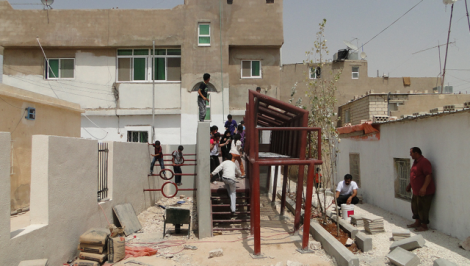A dialogue with public space. Source: Paul Isakson
On our past session of the workshop Tactical Urbanism we have exchanged some case studies, material and information about the concept we’re working, the use of digital tools to create projects that represents the idea of “urban hybridization”, such as Ballon Mapping Toolkit or La une de Paris, 1871 by RaspouTeam, where the interaction between digital tools and physical space allows us to perceive cities in a whole new way and work on them with a complete new approach.
For a deeper understanding on how to focus this workshop, will be useful to talk about the relationship of the two main concepts we’re working on: “Tactical Urbanism” and “Network Design”. If we understand Tactical Urbanism interventions as a laboratory for experimentation in the city, which uses small interventions, mostly all of the time self-organized, to implement changes in public space and the city itself, we can easily relate it with the philosophy behind “Network Design”, as Francesco Cingolani recently wrote:
After much discussion and consideration attempting to accurately define network design, we all agreed that it is also a new workplace. Designing within a network basically means building networks, and even thinking in, and with, the network (network thinking).
Both strategies have more than we think in common, let’s see a few ones:
- 1. They are based on the idea of experimentation.
- 2. They’re guided by swarm intelligence behavior.
- 3. They allow interaction between different nodes.
- 4. They go from micro to macro.
Edge of play by Febrik
Tactical Urbanism is a good representation of what we call swarm intelligence, the collective behaviour of decentralized, self-organized systems, natural or artificial. Is it not the same that network thinking? We believe it is.
So, for this stage of the workshop, we propose to research more tactical urbanism projects, archive them on dreamhamar BLOG [so we all can lean and exchange ideas], read them, understand the concept, read the booklet and conditions of Stortorget, try to apply what we have researched, design some proposals for Stortorget, discuss them on the on-line session and start the loop again!
—
Recomended reading:
[1] “How Media is Transforming Storytelling: A new video series” by Henry Jenkins [link]
[2] “From Community to Collective: Institution and Agency in the Age of Social Networks*” by Douglas Thomas [pdf]



